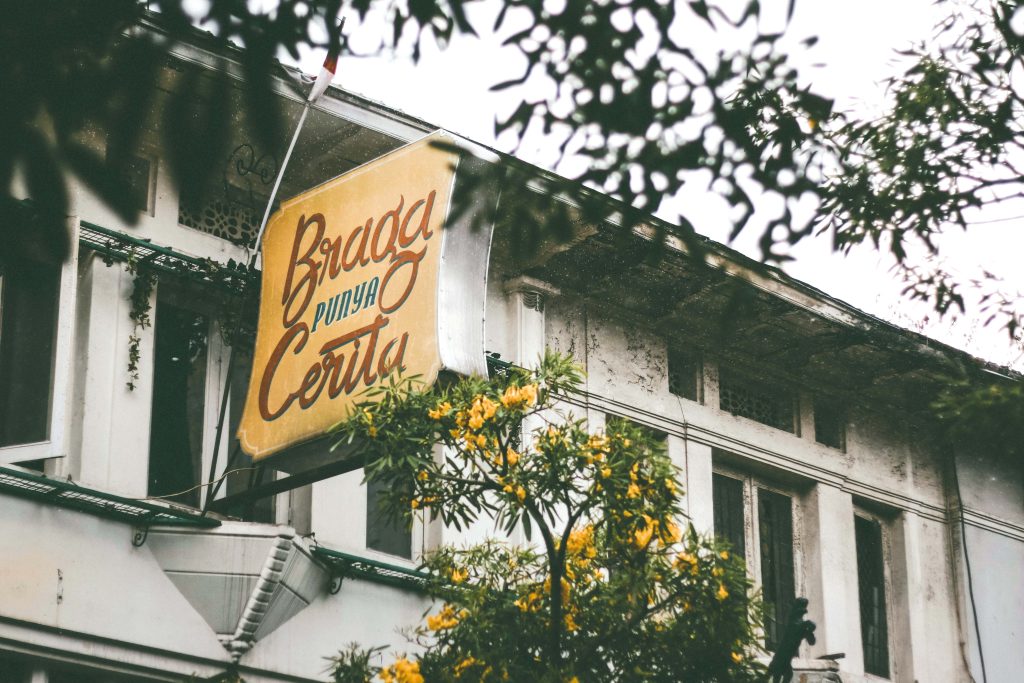
Bandung has long been recognised as a creative city and has never stopped developing multifunctional public facilities, combining real creativity in their development. The city is therefore very welcoming to travellers from across the globe, inviting them peek into the window of Indonesia’s creative industry, including the development of creative tourism villages.
o compensate for a shortage of natural attractions, the city of Bandung has channelled the potential of its creative population into its identity. With many initiatives driven by the city’s young demographic, Bandung hosts a variety of workshops, conferences and festivals, all designed to encourage specific creative developments, design being one of its mainstays. In fact, 56% of Bandung’s economic activities are design-related, with fashion, graphic design, and digital media being the top three sub-sectors in the local creative economy.
After it was named as a creative city pilot project throughout East Asia in 2007 and listed in UNESCO’s Creative Cities Network as a ‘Creative City of Design’ in 2015, Bandung has maintained this culture in an effort to develop its tourist city capacity by building the Bandung Creative Hub (Jalan Laswi No. 7, Kacapiring) which functions as a centre for fostering the exchange of creative experiences and ideas on both a national and international level.

Launched on 28 December 2017, the six-storey Bandung Creative Hub was built as a shared place to develop creativity and education as well as to become a laboratory of the creative ecosystem in producing creative products in order to encourage the wider economic development of the city. As its other purpose, Bandung Creative Hub is a place for special interest tourists to visit as it is equipped with various specific sub-sector facilities, such as innovation studios, 3D printers, laser cutting equipment and a textile printer. But it also has studios for fashion, photo/TV, music, ceramics, design, a design store, an art library, an art gallery and a cinema for experimental films, a co-working space, and 24-hour hangout spaces.
Adding to the city’s creativity element, Bandung also offers new tourism activities that showcase the creativity of the local community, ranging from culinary events, fashion shows, and cultural products in its creative tourism villages. Currently, many creative tourism villages have been inaugurated and each place has its own uniqueness.

Braga Tourism Village on Jalan Braga is one of the iconic areas of Bandung that has always been crowded with tourists, and now apart from having historical buildings, Braga has been developed into a creative tourism village. It offers historical and cultural heritage tourism experiences with the concept of community-based and sustainable tourism. There are several activities that can be done here, such as visiting the community’s medicinal plants area, painting studios, Cikapundung antiques market, newspaper and plastic bag recycling craft industry, and enjoying live Sundanese songs performances and degung at Ropih Art House.
As an interesting way to enjoy the area’s historic scene, travellers can also enjoy the region’s cuisine at iconic restaurants, such as Braga Permai restaurant, Aroma Coffee, and Warung Kopi Purnama. There is also the Teras Braga area which utilises an alley five metres wide and 25 metres long, occupied by 14 small and micro enterprise tenants from the city.
Meanwhile, Cigadung Creative Tourism Village in the Cigadung area, in Cibeunying Kaler offers a variety of fashion, craft, culinary, and cultural arts products. This tourism village originated from the Cigadung Creative Belt which developed and explored the potential of the region independently. The development of this tourism area is carried out by the community, community leaders, and tourism activist groups in collaboration with the regional government.
Cigadung Creative Tourism Village has a One-Day Tourism Tour that consists of a series of activities to attract tourists. The activities include making batik while enjoying a cup of coffee at Batik Komar and enjoying paintings and cultural art works at Rosyid Cultural House. Here, travellers can watch a performance of wayang golek (wooden puppets), also kecapi, and suling instruments at Saung Cepot.
And, Binong Jati Creative Village in Batununggal sub-district is known as the centre of knitting products and has actually penetrated the international market. In the village, there are several groups of knitting craftsmen, both manual and using machines. In this village, travellers can see first-hand the knitting crafts production that started in 1965. This craft product grew and reached its heyday in 1997-1998 when there were up to 700 small businesses in the area. Over time, the number of knitting crafters experienced ups and downs and in 2021 there were around 418 businesses. The large number of businesses in this village is considered to be able to foster community welfare and provides a large number of much needed jobs.






